Make Your Ideas Happen: A Creative Journey With Sam Aquillano
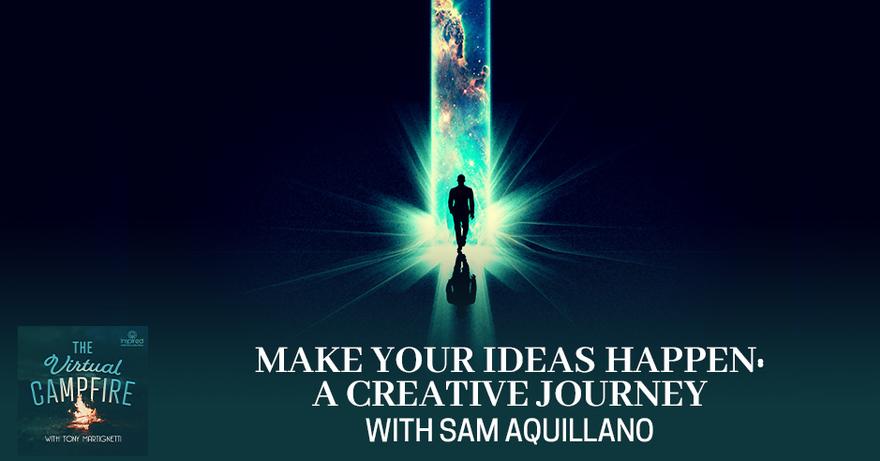
Design is everywhere, and you can find creativity in every corner of the world. But how it influences and inspires is all up to you. In this episode, Sam Aquillano, an author, host of the Inside Front Cover Podcast, Founder and Executive & Creative Director of Design Museum Everywhere, and Senior Strategic Designer at Edward Jones, recounts his creative adventures and shares flashpoints that led to his success as a design leader and entrepreneur. He talks about how following your instinct, collaboration, and the power of the community can help affect change in your life and others. He also shares his passion for providing solutions and teaching people about design and some snippets of his upcoming book, Adventures in Disruption, where you can get some real advice and tips on making your ideas happen. So tune in and be inspired to take that first step towards your creative journey today!
---
Listen to the podcast here
Make Your Ideas Happen: A Creative Journey With Sam Aquillano
It is my honor to introduce you to my guest, Sam Aquillano. Sam is an author, entrepreneur, and business designer. He began his career in industrial design at Bose. In 2009, he founded Design Museum Everywhere, a unique nomadic museum with the mission to bring the transformative power of design everywhere. Sam is a podcast host and is hosting a limited series called Inside Front Cover about the book he's writing on creative entrepreneurship titled Adventures in Disruption.
In 2019, Fatherly named Sam one of America's 100 Coolest Dads. In 2020, Graphic Design USA named him one of their twenty responsible designers to watch. He regularly speaks and consults on business design, strategy, and entrepreneurship. Sam is a Senior Strategic Designer at Edward Jones. He lives with his wife and three kids outside of Boston. It is truly a pleasure to have you on the show. Welcome.
Thanks, Tony. That's great to be here.
I love your intro because there are so many parts of it that are so unique and interesting. What attracted me to the work you do is that you're eclectic. You've got this design at the heart of it all, but you keep so many possibilities open.
I like to have options and I like to keep it interesting. I've never liked to be limited by anything. It comes through, so I'm glad.
We're going to spend some time uncovering the story of what brought you to do this and how did you form the foundations of who you are. What we often do in the show is we do this through what's called flash points. These points in your journey ignited your gifts into the world. I want to give you the space to explore these, but you can start wherever you like and share what you're called to share. Along the way, we'll pause and see what themes show up.
This is almost like therapy. I love it. It's positive therapy.
For the readers as well, that's part of what this is about is helping them to think about their lives in this context too.
To start, for me, a founding principle or the centering principle in my life is about creativity. That was fostered primarily by my mother, but both my parents are extremely creative. My mom is interested much on artistry, visuals, and color. My dad is very much on entrepreneurship. I've realized my mom was an artist and my dad figured out how to influence people, and that was his art. He used that art in business to great effect.
When I was a kid, my mom taught me how to draw and pushed me, my brother, and my sister to draw and express ourselves. I remember every year, we did the reflections contest, which was basically a statewide drawing competition. That's one of those flashpoints. I was in fifth grade when I won the statewide reflection contest for this. My mom has it framed still. You could call it a landscape. It's a full drawing of a landscape.
I'll never forget it. The theme was, "Imagine if." My theme was to imagine a world without color. You have this very lush scene like hot air balloons and a park. Half of it is rendered in black and white, and half of it is in color. Getting recognized for creativity, not only at home but also externally, was a moment for me. You can start to see the talents within yourself because others are telling you that it's good.
I was like, "There's something here. I love to draw. I also loved ideas," and so if my mom was here, she would also want me to tell you about my book of ideas, which is a book I started writing when I was thirteen years old. I was buzzing with ideas always. It's ideas for products, video games, books, and everything. No one told me to do this, but I got a notebook and I started filling it with my ideas.
What always frustrated me as a kid was all these ideas I put in and then watching them over the years become real by other people. I took it to heart. That was a very hard lesson because you think your ideas are so precious. There are 8 billion people in this world and there are so many smart people that any moment you have an idea, there are at least ten people who are having that idea at the same time. I don't care how unique it is or how special you think you are, there are ten other people having this idea. I learned that the hard way. I was a kid. How could I make any of these things happen? That combined with creativity, I started businesses.
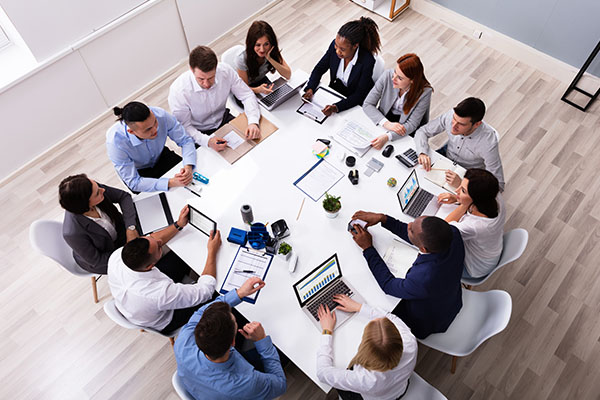
I started my first business when I was about seven years old. It was reselling baseball cards on the school bus. I'm buying them, bringing them on the bus, got a captive audience who got lunch money and I'm reselling these things at a huge markup. That was great. I started another business and the legality is maybe so-so, but maybe the statute of limitations. I was a minor at the time, but when CD burners and downloadable music came out, I was like, "There's an opportunity here."
My parents love them. They were always buying us whatever books we wanted. We had a computer as long as I can remember all the way to the old Mac going way back, like black screen and green graphics, Apple II. I don't know how, but my brother was into technology. He was always pushing them like, "We need a CD burner. We need ethernet."
I created a brand with these little index cards and passed them out at school and said, "Put your ten favorite songs on this list and the next day, I'll come in with your custom CD." I made a killing on that. That was great. The business that my family remembers and I have a lot of fond memories of is my brother and I had a landscape business called Earthworks. We had this innovation at the time, now it's whatever. We minted these refrigerator magnets with our logo very well-designed and very professional, so you wouldn't think, "This is a 13-year-old and a 15-year-old," but we put them in everyone's mailboxes.
What happened was people would go on vacation and be like, "We need someone to mow our lawn while we're on vacation. I had this refrigerator magnet. Call these guys." These kids show up, but they're like, "It's cheap." We do a great job and they're like, "Can you come every week?" We would just work. We would drive around mown lawns. I don't know what I did with all that money. I wish I had it now. It's that mix of creativity of ideas and believing in myself that these ideas were important, and then testing my entrepreneurial skills.
When my brother and I said we wanted to start a lawn business, my dad said, "I'll invest half. I'll pay for half the equipment. You have to pay for the other half." We had very little money, so we worked it off. I'll say this and I've said this a million times, also I say it in my book. I know not everyone gets this, but my dad told me all the time, "You can do anything you set your mind to." You say it enough that a kid starts to believe it.
You can do anything you set your mind to.
He'll say it now to this day when I'll do something random and he is like, "I told you." He doesn't even say that anymore. He just says, "I told you." I know that he's saying, "I told you that you could do anything you set your mind to." I feel lucky with the upbringing and the support I had. That's what I feel brought me to design.
I want to react to what you shared so far. It's beautiful when you look at your upbringing. You're the best combination of your parents. This a font of creativity and this business acumen or entrepreneur mindset, bringing those things together is the perfect combination. It's funny when you mention this because it does feel that way sometimes like you have these amazing ideas, but unless you take the action on them, someone else is out there doing the same thing and taking the action, and then before you know it, someone's invented Google already. I wish I had done that.
Hundreds of people had this idea. I'm not special, but it was the idea for the massively multiplayer role-playing games, which is a natural extension of Dungeons and Dragons and Final Fantasy. I was like, "This is going to be huge," and then all these things started coming out and I was like, "No."
The best thing is that enthusiasm continues to show up. Creativity is not something that you could ever lose. There is something that you continue to move forward with as long as you keep on working at developing ideas. There's always more to come up with.
The world is your oyster. There was the guy who said, "Everything that's been invented has been invented. This is the turn of the century." I was like, "That dude was wrong." Things are always changing and as long as you're riding that wave of change and being open to it, you're going to have ideas and going to be creative, so what do you do with that?

There's one other thing you mentioned which is such a great thing too, is imagine what if. That's one of the questions that I'm constantly thinking about the need to have that question come up to the top. Even if things are working well, what if something else was possible? It opens up the thinking going and saying, "What's the curious moment right now that I want to lean into that could open up a world of possibilities in my life or in my business that allows you to explore?" First, it's created here and then you start to create it out in the physical world.
I used that a lot in my corporate design work. You've got your processes and everything lined up, and it says, "How do you influence change?" One tool I use is this what if or provocations. It allows people to loosen up a little bit because it's just a what if, but that opens your mind and then allows for maybe some things to creep in.
I'm imagining that there's a sense of, "This is all great," but tell me how this all hits reality and you start to create a life where you can make a living.
I was also very lucky. My high school had things like technical drawing and architectural drawing. I was able to start to see windows into careers. I feel education is so important. My middle school was sponsored by Apple. There were so many computers in that middle school and then I go to high school and got technical and architecture drawing. We did stuff around energy and solar power.
You're right. Where do I go with this? My parents, who had given me so much support, didn't know. My dad was in finance. My mom was a mom. My mom never went to college. My dad's the only one who went to college, both my mom's side and his side. I was like, "What are the careers out there, especially for this creative kid?" Folks were like, "Maybe you should be an engineer." I was like, "What does that mean?"
With extremely supportive parents, they want their son to be the best he can be and explore. They took me to see fourteen colleges around the Northeast looking at engineering. We're visiting these departments to maybe spur what's this going to be, a Mechanical Engineering, Aerospace, Electrical, and Nuclear, and all these different types of engineering. It was great. I learned a lot and it was great to talk to people, but it was not sparking. The engine was not turning over. That was a whirlwind trip. It was over a couple of months that left me feeling down and there was no place in the world for me. There's no job that's going to satisfy my creativity, my idea generation, entrepreneurship, and the love of talking to people.
As the story goes, the last school we visited was the Rochester Institute of Technology in Rochester, New York. I wanted to visit it. I grew up in Erie, Pennsylvania, right on Lake Erie. My dad's job moved us to Albany, New York. He worked for GE. GE has a big power generation business and Rochester is right in the middle. I could be a good son. Let's go visit our RIT.
I visit for engineering, but it's the same song and dance. It's still not clicking with my personality, hopes, and dreams. "RIT is cool and right in the middle, so let's explore this a little bit further." My parents were like, "How are we going to pay for this private university?" I'll never forget that we went to the financial aid office. Picture me feeling like, "They're talking about paying for something maybe I don't even want."
They're off talking to the financial aid folks. I'm sitting in the lobby area. If you remember these colleges, they always have the tourist pamphlets like when you go to a hotel and there are 100 pamphlets on whitewater rafting and sightseeing, but at a college, it's all the different majors. This moment is one of my flash points. I turn to my right and see this huge mass of pamphlets. I see one and my mom still has this. It's a pamphlet for Industrial Design.
It's got a sketch of an ice sailboat. They have ice skates, skis, and a sail. I may have mistaken it for maybe an Aerospace Engineering program, but it was a sketch or a drawing of it. I pull that pamphlet out and I'm like, "What is this?" Immediately, I'm like, "This is it." The pamphlet was all about generating those ideas, designing things, using creativity, and working with engineers to make them real. It was more about ideas, creativity, solving human needs, and making things desirable for humans.
I was like, "This is it." I remember my parents coming out of that office and I was like, "Forget everything that we have talked about, done, visited, MIT, and any of this stuff," because I thought RIT was the only place that had this. I had been to fourteen colleges and I had never seen it. I was hell-bent. My whole will was aiming at going to RIT for Industrial Design.
A little farther on the story, my parents, bless them, love them, they were like, "There's no way in hell. You're going to art school." That's how they saw this. They didn't have all the information. They were worried. Who wants their son to be this starving artist? They saw my potential and were like, "He's going to be a great engineer someday." They've already built this story for me and in their mind, that's how they saw me.
Here I am, being like, "I got to put together a portfolio to get in." They're like, "What portfolio?" I was like, "I need to do drawings. I can use some of my technical drawings from high school, but I need to do some renderings." I remember my dad came into my room and he was like, "What are you doing?" I was like, "Drawing something. I'm getting ready to apply to RIT." He was like, "No, you're not."
I had to convince them. I remember working towards like, "There are jobs and this is a burgeoning field." I don't know if I convinced them or again, bent them to my will. I only applied to RIT, one school. They were hysterical that I didn't have a safety school or a stretch school. RIT was it. This is what I'm doing. This is everything to me. Thankfully, I got in. I started the Industrial Design program. I had an amazing four years there. I learned so much.
I say this to show how much important this is to me. I got a 4.0 across the board at RIT. I was so focused. People are like, "Do you want to study abroad?" "No, I am focused on doing this thing and being the best that I can." "Do you want to go on spring break?" "No, I need to work on my portfolio." I had an internship every year. I worked at GE as a technical drawer and in Kodak, I designed cameras, and then at Bose, I designed speakers. That's where I ended up getting my first job.
Focus on doing your thing and being the best that you can be.
That's my story of getting into the field and then coming alive at RIT in the design world or design community. I was volunteering and started events. I can get into how that experience went to the Design Museum, but that was a huge moment to getting into the field that matched every element of my being.
I love what you shared because there's something about this that is to say, "Can you imagine if that didn't happen? Can you imagine if you didn't follow that instinct that you had at that moment to say, "This is it?"
My brain won't even let me go there.
It's powerful because when you think about it, there are moments when we see these things and we say, "There's something calling me to this thing. I could take the risk and do this and if it doesn't pan out, I can always have the option of not doing it, but if I don't, I will regret it." Oftentimes, people will say, "I don't live and regret. Regrets are not something that I think about," but this would've been something you would've deeply regretted.
I can't even imagine the level of regret I would have if I hadn't gone down that road. It would be crippling, honestly. It would be so devastating. I have to laugh because otherwise, I'll cry.
It's very clear from the way you described it and the way that you walked us through this story, that this is something that is deep inside of you and is meant to be.
It was 100% meant to be. Going back, I excelled and I felt that recognition through student design competitions and overall working with my professor. I had that reinforcement constantly of, "This is right." I felt like a rocket ship. I was fueling it myself, working extremely hard or maybe too hard. Design can do that. There's never an end. I was a student-athlete for my first two and a half years at RIT, the RIT Crew, which is something I did through high school and was very passionate about, but it broke me. I had to stop rowing because I was putting in all my energy.
There was also this moment where my parents were like, "Is he doing this?" To prove that this is right. I remember a moment of being like, "Sam, you don't have to get a 4.0. You don't have to like work yourself into the ground." I remember that moment and being like, "Why am I doing this?" It was a reminder that I'm doing it because this is what I care about and passionate about. I loved it.
I mentioned volunteering. Me and a group of folks ended up chairing what's called the Industrial Designer Society of America. It's our professional group, the student chapter within RIT. We developed events and workshops. We'd bring professionals in to teach us. My reason for doing it was twofold. One, selfless, to teach my classmates and me the future of our industry. My selfish reason was I wanted to meet everyone in the field. I wanted to grow my community. I knew the importance of community.
I'd come from a big Italian family. I had to do something for my corporate work at Edward Jones, and I was like, "I'm going to work the cousins' network because I need to talk to a doctor or a lawyer." We're always there for each other. If I have that community and that network, I'm always going to have a job. I'm always going to have mentors. I'm going to have people I can chat with. I started building that network from freshman year and that led to so much.
My friends and I started the first student-led conference. For students and by the students design conference, we called it, Thought at Work. It stemmed from the conferences we were going to were not for students. There's the idea and opportunity that we saw and we're like, "We think we can do better." We started Thought at Work as a way to educate students, so students from all over the Northeast came and that conference is still going on at RIT. There are still students carrying that torch. I was like designing products as a student and designing experiences, events, and educational stuff. You can start to see this dotted line start to point towards the design museum, but we're not there yet.
One of the things that you're pointing out here is the idea that nothing gets done alone. Even the things that are creative in nature, where you feel like, "It was my idea," but in order for that idea to go into action, like when you were a kid writing in your ideas book, now you're putting them into action by harnessing the power of a community. That's powerful.
I'm reminded of the quote, which I adapt for my own reason. It's "Success happens when preparation meets opportunity," but what I do is add, "Success happens when preparation and your connections meet opportunity." It's so important that you think about that. It's those connections, the people you bring around you, and you have around you that allow you to be successful when the opportunities arise.
That resonates so much. If you think about it, I've had a co-founder my whole life, my brother. We started businesses together. We trust each other. We share each other our ideas. That notion of you don't have to own everything, you can collaborate, and other people's ideas are important, I'm not perfect at that, but I've had this training or that 10,000 hours of working with other people and having a shared vision that led to success both in my early design career and then starting the museum. I did not start it alone. Not at all.
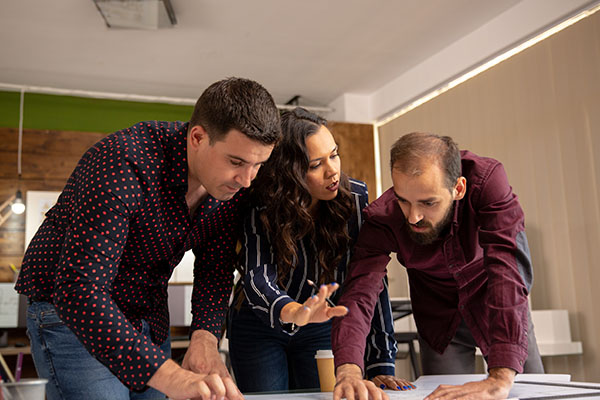
Let's get there unless there's another flashpoint along the way you want to share.
There are a lot of them when you start to think about them. I'm feeling a lot of gratitude and fortune. At school, as I mentioned, my last internship was with Bose. I won what was called the National Student Merit Award. That was this major moment for me of all that work at RIT. The team at Bose was at that award ceremony and they were like, "We got to get Sam back full-time."
A lucky moment when I was hired into a design team that was filled with experts. I was the youngest designer by about twenty years. I started at Bose when I was twenty years old. My mentors, the senior designers, were in their 40s and 50s, but they believed in me. They had a lot of humility towards this young guy with his hair on fire, trying to make an impact. They gave me a lot of opportunities to design important things.
I designed all kinds of consumer electronics, but the last flashpoint if I wrap it in a bow is this called the Red Dot Award. It's a museum in Germany that awards this Red Dot Design Team of The Year Award. At this point, I'd maybe been on the team for a couple of years. I can't take credit. My mentor, Mike Loude, who was the Design Director built this amazing brand and team in collaboration with Dr. Bose, the one who started the company and had this vision.
We won the Design Team of The Year Award, which is the biggest award you can get in the design world. It was the same year that I also won an individual Red Dot Award for my product design work. I got to go to Germany and be on stage with these senior designers. I'll never forget that moment. This is like the Oscars of design. I was 27 or something at the time.
I bring this up also because of this cool interaction where we had the night of our lives, as you can imagine. This award is a metal casting and it's heavier than hell. I carried it all night. At first, they gave it to me because I was a young guy. I danced and slept with it that night. There was this moment where I felt like, "Is this my peak? " I'm 27 years old. My mentor, Michael Loude, was so good and I'll never forget he came up to me and he was like, "You're going to be back here."
I was drinking beer right out of this trophy. I was like, "This is everything." To have him be like, "You'll be back here someday." It made me feel good, and it also kicked me back into gear, "You're right, Mike. This isn't it. I'm just starting." I had an amazing career at Bose, but I felt this again, which led to my next transition from the museum to my current job.
This is only me and this is not a judgment on anyone else. I started to feel like it was a little bit rote. I'd been at Bose for several years and I wasn't feeling challenged anymore. I was feeling like I had cracked it. I had figured out who I needed to influence, who I needed to negotiate with, and what chips I had to spend with that person to get the plastic mold, to be the way I wanted it, and to get the grill of the speaker. I always joke that I had my final project was this computer speaker, and it went so smoothly.
The design won a bunch of awards on its own. I'll never forget the head of engineering who was not a fan of design, picked it up and was like, "This is a good design." I was like, "I've convinced the head of engineering. I've won awards on this. It was easy. I got to get out." People were like, "You've done it. You could spend the next 30 years doing this thing that you're good at. Bose has a pension. Cruise and do that," but I was itchy. I was like, "This is not right. I'm not learning anymore. I'm not losing my curiosity."
By the way, I can only articulate all of this now. At the time, I was lighting stuff on fire. My relationships were on fire. It sounds so neat and self-actualizing. I can only do that because I've now made that transition again and I can realize and I'm smarter now. I had also transitioned from a student chapter chair of this industrial design society to now I was the Boston Chapter Chair.
In the evenings, with my best friend, Derek, and a handful of other folks who were volunteering their time, we would design conferences and produce them. We had a whole series of mentorship sessions or senior designers would mentor the next generation. Also, we had parties. We're all about bringing the community together and educating the community. I had my corporate job. I had the IDSA, which was a professional organization.
I was also teaching design. Someone was supposed to be a professor of Consumer Electronic Design from Bose at Wentworth Institute of Technology, then his wife got pregnant and had a kid. He was all lined up to do it and he was like, "I can't do it. Who could pick this up?" I wasn't much older than the students at that time, but I was like, "Teaching sounds fun, and also, I could use the extra money," so I started teaching at night.
I'm working at Bose, planning conferences and events for the IDSA, teaching design and then I also decided to get my MBA at night. I saw that the people who were having an impact on the corporation were the business marketing folks. I was like, "If I want to make a big impact, I'll do that." We talked about the importance of options for me. I'm always looking for ways to unlock more options. I was like, "If I get an MBA, I can either rise at Bose, a full-time professor because you need that terminal degree to do that, or start something new related to what I was doing with the Industrial Designer Society.
This idea started to percolate between Derek and I. Derek's my best friend. We met at RIT. Separately, we moved from our it to Boston and saw each other at an event. We're like, "How are we both here right now?" Him and I were doing the Industrial Designer Society. He was also a corporate designer at Phillips and Staples and was also teaching design at Wentworth. Everything that we were doing was about designers talking to designers. I was a corporate designer, teaching design to designers and making events for designers, but how far can design go if we're in this little group of guys and gals and others with dark-rim glasses and black turtlenecks?
Design is about everyone. It's about people and solving problems. If designers think that we're some special group that has been anointed by God to be the ones that do this, it just didn't resonate. I've never resonated with the rockstar designer or all-star rockstar architect. To me, it's about community and solving things together.
Design is about community. It's about solving things together.
Our tenure as the chairs of IDSA was ending and they had changed their whole structure. We thought, "Is this our moment to start something new that takes this design conversation and expands it so wide with no limitations so that anyone feels that they can jump in?" Accessible enough to pass the mom test all the way to be interesting enough that a practitioner's going to be like, "I want to be part of this because it's designed with a capital D."
We also saw that, too, the siloization of design. The architects only talk to architects. The industrial designers only talk to industrial designers. We're like, "Design is transcending. It's not about your particular field. It's about a process and conversation." Everyone should be welcomed. Doctors, lawyers, and everyone has problems and challenges. That was the kernel of the idea that got us to launching what at the time was called Design Museum Boston.
I love what you shared. That's awesome. That's a disruption in its own right. Your book it's about disruption. That is powerful because it's like you're playing in this pond and you're an echo chamber with a lot of other people who feel the same way and it's all great, but having this sense of like, "Why don't we blow this thing up?"
We all pat each other on the back. We're like, "Design is so great. We're so great. We're the best." These are early days for me. My journey's been longer, but a bunch of White dudes high-fiving and thinking we're the best. Looking and being like, "The world is more than us. Let's get outside of our demographics, psychographics, fields, and designs about collaboration. Let's preach the gospel of design and grow this tent." It ended up being insight and inspiration that unlocked an opportunity.

We had this idea to start an organization. No idea is like, "Boom, a design museum." We're like, "How might we open design up to be something bigger than the field itself?" That's where I felt we had this opportunity with an organization or a museum. I thought back to that book of ideas and I thought to myself, "This idea, I'm not going to sit around and let someone else do this."
When you get an idea, don’t sit around and let someone else do it.
I'm taking action because I feel so strongly about our point of view. Derek also comes from a big Italian family. We're all about community and inclusion. The fact that as friends, we both felt ownership of this idea, but Derek, in particular, had this vision around it being open. That level of openness and transparency is a line that we drew through the entire history of our organization. There was another effort in Boston to create a design museum with a different set of values, maybe not as open or transparent. We felt this calling that we had to do this, that we had to invest our time and our energy to make this what it could be what we believed it could become.
I'm glad you did. It's an amazing initiative. It's opened up the doors to so many things and there's still so much that you will be able to do with this as you move forward.
There are two moments of disruption. That's my book title, Adventures in Disruption. It was an adventure. That moment of being like, "We got to do this because the design's bigger than us. Design's bigger than a field. We're open and inclusive." That was a moment also in design. The other moment came when we started getting down the road. The first idea was to create a traveling exhibition that would teach people about design and we'd travel it around the state, to begin with, and then maybe my ambition colored it and I was like, "Why just one exhibition, Derek? We could have a whole museum where we're constantly programming and creating?"
As you mentioned, I love museums. I would go to the Institute for Contemporary Art in Boston and MFA all the time. We were like, "Yes. This could be a museum. We got to get a building or a space." I remember our first vision book that we started shopping around partners and supporters like how to brick pattern. It's like, "We need bricks and mortar." That's what a museum is, but this was the recession. There have been many recessions, but this was what I called the Great Recession, which at the time felt like a huge meltdown, but COVID makes that time look like nothing.
At the time, it was bad. We could not get money and raise funds. People thought it was a great idea. We had a lot of pats on the head. "Great idea, Sam and Derek, but now is not the time to start a new nonprofit." One of those moments of like, "Do we stop?" I remember thinking, "Derek had gone to a couple of pop-up retail shops," and he was telling me about them in New York City. There had been a lot of talk about that, like with the Olympics where there'd be pop-up experiences.
Remember, I'm going through my MBA program and I'm like, "What are the two biggest expenses for a museum?" The space and the marketing to get people to come to your space or to pull people to you. I was like, "What if we didn't have those and we went to where people already are? What if we were a pop-up museum that we went to market as much because we're showing up? We're surprising people." I'll never forget Derek being like, "Yes." This became our slogan, "Design is everywhere." That became, "Design is everywhere, so are we," that was our whole thing.
We had this marriage of design is everywhere, so the museum should be everywhere as well. Every museum can't do that. The Norman Rockwell Museum in Western Massachusetts cannot do that because they have a collection of precious Norman Rockwell paintings. They can do things to bring that to the public in different ways, but the design is all around us.
In fact, the Executive Director of the Norman Rockwell Museum on stage once asked me, "You can't be a museum. You don't have a collection. Where's your collection?" I said, "With all due respect, my collection is everywhere. You're looking at my collection. My collection is my iPhone, the microphone I'm speaking into my computer, and my house." The crowds don't like that, but I believe that.
Our subject matter is designed, replicable, and mass, in some cases, married with the idea that a museum can also be everywhere. It can be on your phone, in your community, in your ears with a podcast, or in your mailbox with our magazine or our books. We had this notion that we were going to be everywhere or at least be perceived to be everywhere. People would say like, "How are you guys doing this?" You are literally everywhere. You're aligned with every movement or news item. You're putting it through a design lens. That was our mode of operations, be nimble, be quick and aligned with what people care about, and be where people already are.
Be nimble and quick, align with what people care about, and be where people already are.
It makes me think of 4Cs. The content is being created constantly. You are curating that. Bringing those things together is what makes the magic happen. It's not anyone who can say, "Why don't I create my own design museum everywhere?" You could, but the reality is that you have to know the eye and how to curate appropriately based on your experience.
Curating by experience and then the community. This is throughout my book. In fact, as I start to revise, I'm in the editing phase now, I have to come up with a different phrase, but I say in my book, "The community never let us down," probably 100 times because around every corner, the community solved problems for us, got engaged, and that led to resources.
These companies that people start becomes a mirror that they hold up against themselves. To say, "Here is my company and my company is me." It's because of Derek, me, and our friendship, and our first two volunteers were my brother and his girlfriend. The circle kept growing. Foresight makes it sound like we're so strategic. We knew that this was bigger than two guys.
Before social media blew up, we created our own social network. It was White-labeled and you could basically customize it was called Ning, and this is my brother. My brother is a great technologist who found this platform and customized it for us, where you could post ideas. It was like Facebook, but it was branded Design Museum. That was literally the first thing we ever did and hundreds of people joined within weeks. They were posting their ideas, sharing thoughts, and everything.
We reinforced all of our next steps. Our first exhibition was curated by the community. We had events that brought the community together. That work never stopped. Everyone is like, Sam, "You're so smart that you came all this stuff." No, I listened and was surrounded by smart people. I made mistakes, but I could recover because I had a net under me of people who cared about me and the vision.

If you listen to my podcast about writing the book, Inside Front Cover, you'll hear these stories about entrepreneurship ending up becoming the hero's journey. It happens. It's human nature. "Here's this guy, he had an idea and he did this. He overcame adversity." As I told, Paul and Blake, who designed the cover of my book, "My book can't be that. My book cannot be Luke Skywalker meets Obi-Wan Kenobi and takes on the empire and wins."
As Sarah Hartman has shared, "My book needs to be Oceans 11," which is these eleven experts come together and go through this amazing heist and are successful. That is the model. As I'm revising, I'm even checking myself, "Watch out. Sam. Your ego's coming up. You didn't do this alone. That's a good check on the story." It's nice to go full circle with that community piece.
Is there anything about the book you want to share before I move on to our next question?
I'm excited about it. I've moved on from the museum, which was a very hard transition and it was the same idea that I shared that I could now articulate, which was I'm losing my curiosity. I've figured this out. I realize that to be the best me, I need to be asking questions and figuring things out. Once I have figured it out, "I can't be the best version of myself." I found, even in my new job at Edward Jones, in that space, as I'm learning new things, I'm able to support other people that I can't as I got towards the end of my Bose career. That transition was important.
To be the best, you need to ask questions and figure things out.
The book, I feel like has been an important transition point because it's hard to leave your baby. I started this thing several years ago. Derek moved on a couple of years in. My brother and Jenna moved on. I have been this shepherd and to leave your baby is this big deal, but writing this book has been this bridge to my next thing.
The whole title of the book is Adventures in Disruption: How to Start, Survive, and Succeed as a Creative Entrepreneur. It's my story from my point of view about that community and starting it, but peppered in a framework for anyone who has a creative idea who wants to start a creative venture or what I keep calling a creative startup. You got your tech startups. You got your creative startups. The book will show a roadmap or a path that you could walk on with some real advice and tips for making that happen. Hopefully, learn from my mistakes and maybe accelerate your entrepreneurial journey in some exciting ways.
The last thing is it's the real story. It's not glossed over. The first chapter isn't Sam and Derek had this idea and they rolled. The first chapter is about self-doubt. The first chapter is about you already started because you're already thinking about it, so it's a matter of where you go from there. I did talk about in that chapter, "I have my best friend Derek and I had to get the courage to push through my self-doubt and even mention this idea to him."
When I mentioned it, it was like fireworks, hearts, and smiles. I wanted to talk about reality. We're also terrible in America about talking about emotions and feelings, especially around the business. It's the self-doubt again, "Should I do this? I could spend my time on anything. Is this right?" There are some strategies in that first chapter to use design and creativity to help push yourself through that self-doubt in a way that is fun or pushes you to, "Maybe I shouldn't do this, but at least you're doing something."

I'm always biased towards action. That bias helped me get through chapter one. That chapter ends with me sharing this thing with Derek, which I thought was this big deal sharing this idea and him being like, "We have to do this. This is it," and me having this sense of, "Why didn't I tell Derek this a few years ago?" How do you accelerate that? That's all I'll say about the book. It's a great path. It's a fun story and a real story. There are moments of deep depression and darkness, and then there are moments of champagne and celebration, so it's a lot of fun.
The book is in process, so it's going to publish in the spring of 2023, but we've mentioned this in the podcast that's called Inside Front Cover. What I've done is I've chronicled the design process of the book cover through a podcast, and it's been a delight. Much like this conversation, now I want to go back and add some of this stuff into my book. In those eight episodes, I mentioned this to Blake, Paul, and Andrew many times, uncovering things in my story that I want to go back through. It was more than designing the book cover. It was uncovering the story and the important flash points, to your point, throughout.
First of all, go check out the podcast, but be ready for when the book launches. I have one last question that I ask everyone, and we always have fun with this question. I'm dying to find out. What are 1 or 2 books that have had an impact on you and why?
I love books. I read a ton, 40 to 50 books a year. I don't know if that's a lot, but it feels like a lot. A book that meant a lot to me in my early days of design and then one that I'm reading now that's blowing my mind. The one I read very early on was recommended to me in high school. Mr. Nelson, my technical drawing teacher in high school, had this fascination with a design thought leader. His name was Victor Papanek. If you called Victor Papanek a design thought leader, he might punch you in the face because that's not what he wanted from what I've learned.
The book is called Design for The Real World. It's about pragmatic design that solves problems, not a decoration or window dressing, but a design that solves problems bordering on aesthetics design for utility. The auto industry said that it'd be impossible to design a bumper in an automobile that could survive a crash at 20 or 30 miles an hour, not fast. This was in the '50s and the '60s. Victor was like, "Challenge accepted." He took a shelf and stacked tons of empty beer cans in there. He probably stacked them 5 or 6 deep and then filled it. He strapped it to the front of the car and ran into a wall at 30 miles an hour. You can imagine that all those beer cans crushed and absorbed the impact and voila.
I love that book because it was real. This guy wasn't afraid to buck the establishment. I don't want to say it wasn't about making things beautiful because he also believed in beauty as a utility, but it was about using design to solve problems. I read that in high school, thanks to Mr. Nelson. I then had amazing professors, but I had a professor, Alan Redig, who always instilled that design is about improving people's lives. That is number one. He opened that thought at a work conference with that quote. Victor, Mr. Nelson, and Alan, our huge in my life, so that's one.
The book that I'm reading now is blowing my mind, especially because my world now is all about design and financial services, things that are very intangible, like money and investments. The book is called Antifragile by Nassim Nicholas Taleb. He's got a whole series of books and this is the ultimate end of the series, but this book is blowing my mind. He's got this unifying theory of systems and that there are fragile systems, robust systems, and antifragile systems. He's pushing this antifragile work.
We understand fragile and robust. If you think about it, a fragile system, when you shock it with something or hit it, it breaks. We understand fragile. Robust, you shock a robust system, and it stays the same. It's strong and doesn't change, but the systems that are antifragile that when you shock them, they improve or get better.
I love that notion. I've been thinking about systems and designing systems my whole career. I love the idea that a system can be designed to improve as change happens because change is so important in my life, absorbing change, being impacted by a change, and being okay with change. As I'm reading his book, I inadvertently have tried to design my life to be antifragile.
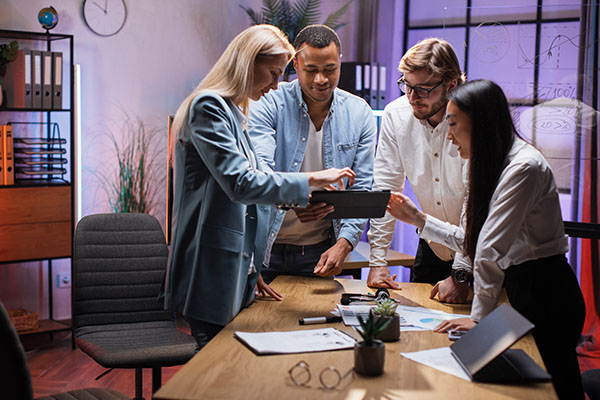
I was violently assaulted in 2019 and I'm lucky to be alive. I bring it up because it made me a stronger person because I had a community around me. Our second boy was born about a few weeks after that assault. I held him in my arms. He helped me heal. My community supported me. As I'm reading this book by Taleb, it's hitting me to the core because I feel like my life's been about optionality. He talks about optionality. My life has been about trying things and being open, and taking every change, shock, or what have you and turning it into something better.
I love the way you described that because, first of all, I was very personal, but you brought the antifragile concept into a good concise way of understanding it. Most people, when they read that book, they say, "I get it."
The book's 800 pages. It's a huge book.
It's not easy, but ultimately you brought it to a frame that people can understand. Truly amazing book. I'm going to buy the first one.
You're going to love it.
I'm going to be you all about it. I'm a huge Buckminster Fuller fan.
Papanek and Fuller are so simpatico. They talk about each other. You're going to love it.
We could have another episode here. There is so much that we could talk about, but we do have to come to a close. Thank you so much for bringing your full self and sharing all that you've shared. It's truly an enjoyable time and a great conversation, so thank you.
Thanks for your questions and for the opportunity. It's always so nice to reflect back. I appreciate the forum and the questions, so thanks, Tony.
I want to make sure that you give people a chance to find out where they can find out more about you.
You can find out more about me at SamAquillano.com. If you want to check out the book and the podcast, go to InsideFrontCover.com and you'll see the episodes and get into it there.
Thank you again and thanks to readers for coming on the journey. I know you're leaving inspired. Start looking for design everywhere.
Important Links
- Design Museum Everywhere
- Inside Front Cover
- Industrial Designer Society of America
- Design for The Real World
- Antifragile
- SamAquillano.com
About Sam Aquillano
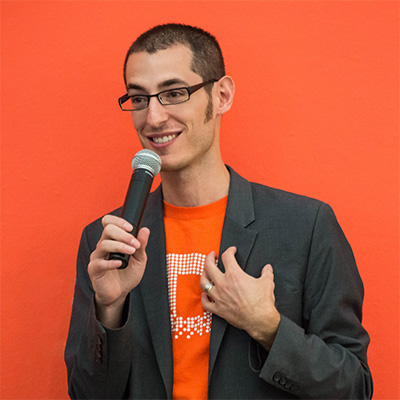 I’m a business designer, entrepreneur, and design leader with 20 years of experience in design strategy and management across creative fields, in organizations big and small, for profit and nonprofit. I earned my BFA in Industrial Design from Rochester Institute of Technology and went on to design consumer electronics at Bose Corporation. There, in 2008, I received the Red Dot Design Award for my design work, and that same year the entire Bose Design Center received Red Dot’s prestigious Design Team of the Year award. I taught design and entrepreneurship at Wentworth Institute of Technology, Massachusetts College of Art & Design, and Babson College, where I earned my MBA in 2014.
I’m a business designer, entrepreneur, and design leader with 20 years of experience in design strategy and management across creative fields, in organizations big and small, for profit and nonprofit. I earned my BFA in Industrial Design from Rochester Institute of Technology and went on to design consumer electronics at Bose Corporation. There, in 2008, I received the Red Dot Design Award for my design work, and that same year the entire Bose Design Center received Red Dot’s prestigious Design Team of the Year award. I taught design and entrepreneurship at Wentworth Institute of Technology, Massachusetts College of Art & Design, and Babson College, where I earned my MBA in 2014.
In 2009, I founded Design Museum Everywhere, an online, nomadic museum with the mission to bring the transformative power of design everywhere. Design is everywhere, so the museum has no permanent address, instead, the museum gets turned inside out, making it accessible to all across many platforms and locations.
I host podcasts on design, including Design is Everywhere, a weekly show about the impact of design in our world (2 years, 90 episodes - http://dme.link/podcast), and now Inside Front Cover, a show about designing the cover of my new/forthcoming book about creative entrepreneurship (http://insidefrontcover.com).
I’ve worked at and consulted with some of the top brands in the world including GE, Kodak, Bose, Shark/Ninja, and Philips. I love using design and business strategy to solve complex problems that work for people, business, and the environment. In 2020 Graphic Design USA named me one of their 20 Responsible Designers to Watch. I frequently speak at events and conferences on design, strategy, entrepreneurship, and museums, including most recently at the New England Museum Association, MIT, TEDx, and various corporate gatherings.
In 2019 I was named one of Fatherly’s 100 Coolest Dads in America.
Love the show? Subscribe, rate, review, and
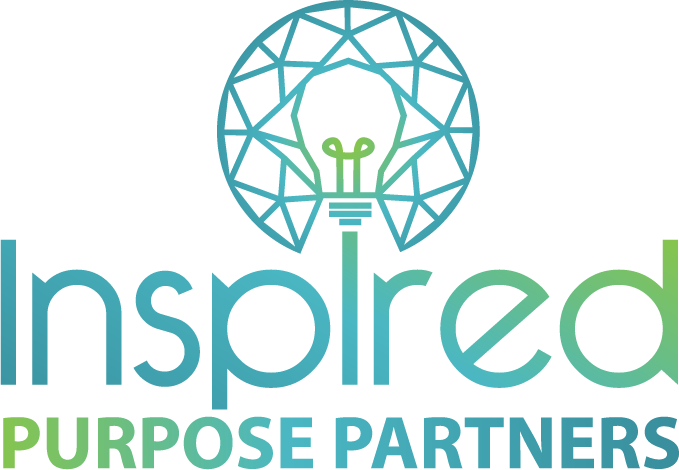

0 comments
Leave a comment
Please log in or register to post a comment